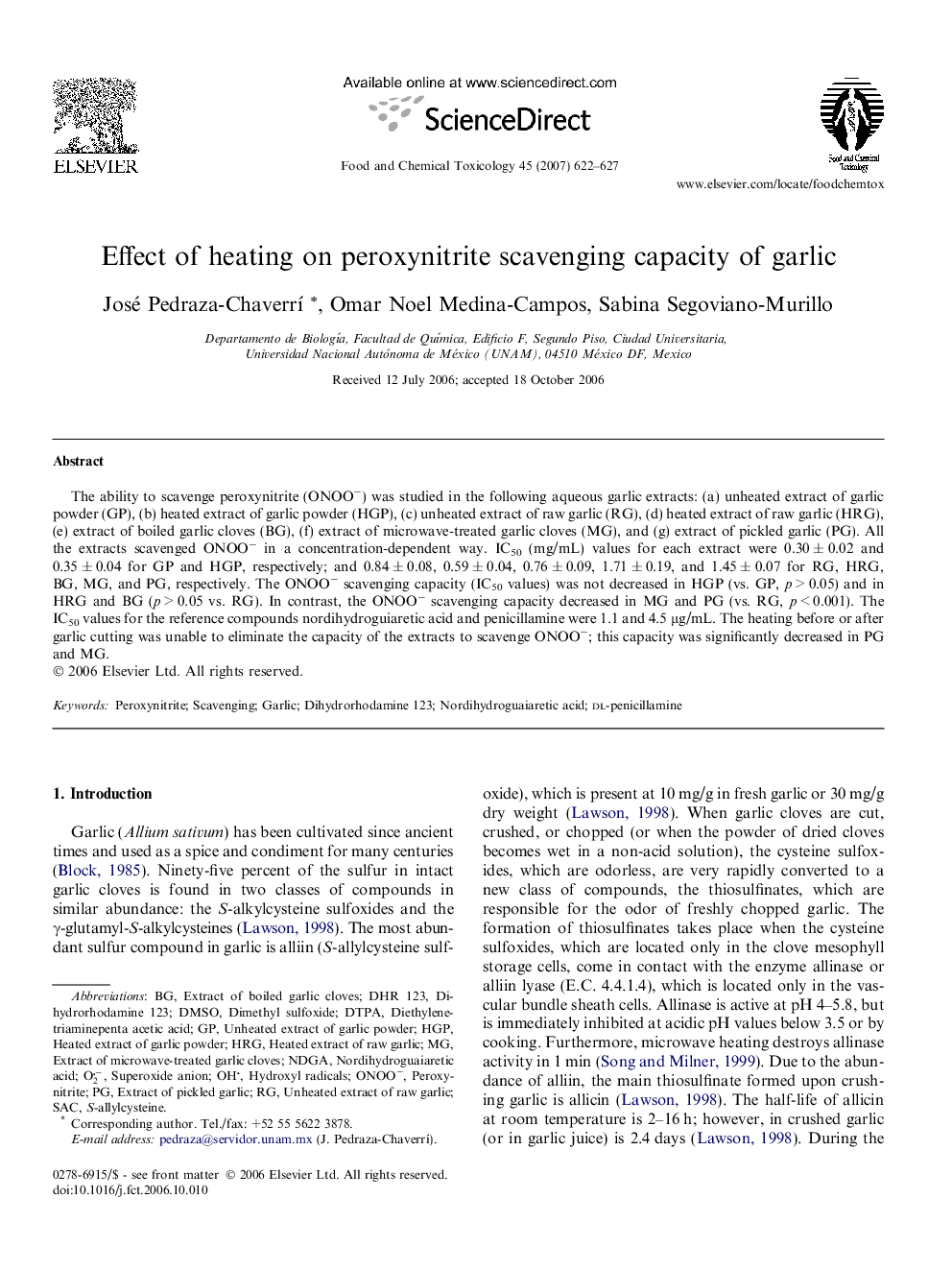| Article ID | Journal | Published Year | Pages | File Type |
|---|---|---|---|---|
| 2586871 | Food and Chemical Toxicology | 2007 | 6 Pages |
Abstract
The ability to scavenge peroxynitrite (ONOOâ) was studied in the following aqueous garlic extracts: (a) unheated extract of garlic powder (GP), (b) heated extract of garlic powder (HGP), (c) unheated extract of raw garlic (RG), (d) heated extract of raw garlic (HRG), (e) extract of boiled garlic cloves (BG), (f) extract of microwave-treated garlic cloves (MG), and (g) extract of pickled garlic (PG). All the extracts scavenged ONOOâ in a concentration-dependent way. IC50 (mg/mL) values for each extract were 0.30 ± 0.02 and 0.35 ± 0.04 for GP and HGP, respectively; and 0.84 ± 0.08, 0.59 ± 0.04, 0.76 ± 0.09, 1.71 ± 0.19, and 1.45 ± 0.07 for RG, HRG, BG, MG, and PG, respectively. The ONOOâ scavenging capacity (IC50 values) was not decreased in HGP (vs. GP, p > 0.05) and in HRG and BG (p > 0.05 vs. RG). In contrast, the ONOOâ scavenging capacity decreased in MG and PG (vs. RG, p < 0.001). The IC50 values for the reference compounds nordihydroguiaretic acid and penicillamine were 1.1 and 4.5 μg/mL. The heating before or after garlic cutting was unable to eliminate the capacity of the extracts to scavenge ONOOâ; this capacity was significantly decreased in PG and MG.
Keywords
Related Topics
Life Sciences
Agricultural and Biological Sciences
Food Science
Authors
José Pedraza-ChaverrÃ, Omar Noel Medina-Campos, Sabina Segoviano-Murillo,
